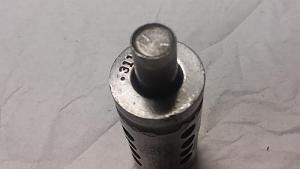I have a pair of .311 lube/size dies and in both cases the "I" rod have a machined in lip as shown below. I did a search here as to why they would be there but nothing relevant came up
I'm not sure what bullet profile this is used for but it does not appear to be conducive to sizing flat based or gas check bullets.
Short of buying a new die and as I don't have access to a lathe the thought is to chuck the rod up in the drill press and kiss a file and some sandpaper to finish to remove this lip.
Thoughts?


|
   
   
|


|





 Reply With Quote
Reply With Quote















